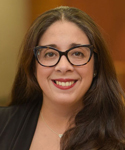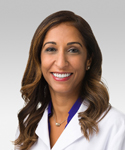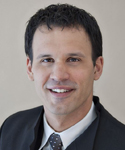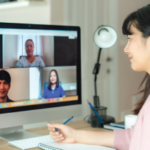 This year’s rheumatology fellowship recruitment season has been virtual. The desire for safety during the COVID-19 pandemic has led programs to use video-based interviewing for visiting applicants, as well as internal and local candidates, to maintain consistency and fairness.
This year’s rheumatology fellowship recruitment season has been virtual. The desire for safety during the COVID-19 pandemic has led programs to use video-based interviewing for visiting applicants, as well as internal and local candidates, to maintain consistency and fairness.
In a Sept. 16 editorial in Arthritis Care & Research, Adam Kilian, MD, assistant professor of medicine in the Division of Rheumatology at The George Washington University (GW) School of Medicine & Health Sciences, Washington, D.C., and colleagues discuss the benefits and challenges of the 2020 rheumatology fellowship recruitment season.1
Programs are creating standardized approaches to application review and applicant interviews to create equity in assessment. As programs strive to recruit fellows, they update their fellowship program websites and create virtual tours of in- and outpatient clinical facilities, educational conference settings and fellow office space.
These changes translate into cost savings for applicants and open the possibility that programs may see an increase in the geographic and cultural diversity of applicants. The authors of the editorial even suggest virtual recruitment may help diversify the rheumatology workforce.
The Rheumatologist (TR) spoke with fellowship directors from three U.S. regions—Midwest, Rocky Mountain and East Coast—to see how the pandemic has changed their interview season.
Fellowship Program Directors
Anisha Dua, MD, MPH, is the fellowship program director at Northwestern University’s Feinberg School of Medicine, Chicago, and a co-first author of the editorial. Northwestern’s shift to virtual interviews meant candidates still spent the same amount of time engaged in the day—from approximately 9 a.m. until 1:30 p.m. Northwestern created a fellowship introduction video and a virtual tour that was sent to applicants with their individual interview itinerary.
Jason Kolfenbach, MD, is the fellowship program director at the University of Colorado School of Medicine, Aurora. As a result of the shift to virtual interviews, Colorado reduced the duration of the interview from six hours to less than four. His program also created videos designed to give candidates an idea of the Colorado experience.
Irene Blanco, MD, MS, is the fellowship program director at Montefiore Health System, The Bronx, N.Y. Montefiore’s virtual interviews meant candidates no longer had to spend a half day interviewing in person. Instead, they could complete the entire virtual interview process in just two hours. Montefiore also created a virtual tour.
TR: How has the pandemic changed your interview season?
Dr. Dua: The pandemic has resulted in significant changes to this year’s interview season. With the mandate that all interviews be done virtually for safety reasons, as well as fairness to applicants, we had to restructure the process significantly. This includes practicing and teaching about the etiquette for, and functionality of, the virtual platform for our faculty and fellows conducting the interviews, as well as ensuring candidates were comfortable navigating and participating in this format.
Given the likelihood that many applicants will have to submit a rank list without having seen the hospital, clinics or—possibly—even the city, we prerecorded short videos, including a welcome to the program, as well as a fellow-led campus tour. We provided detailed information about the program and faculty in advance of the interview day and had contact numbers and back up options to ensure we could troubleshoot, in case there were technology difficulties from either side.
To try and reproduce some of the high-value interactions that occur in live interviews, we set aside time for the candidates to participate virtually in didactic conferences, as well as time to discuss and chat with the fellows informally. To try and increase exposure and interaction with various faculty members, we incorporated a few panel interviews as well, which we had not done for in-person interviews.
This season is quite different from prior interview seasons, and rapid adjustments have had to be made from the perspective of programs, as well as candidates.
Dr. Kolfenbach: Even though we have all learned to adapt to Zoom meetings, I miss the in-person interviews. That has been the biggest challenge for me personally, as a program director during the interview process. We noticed an increase in the number of applicants applying from the East and West Coasts, which could be due to the reduced cost of virtual interviews. Some of the applicants may not have visited Colorado before, which I think would be a big challenge for applicants in determining if a program—and its location—is the right fit.
 Dr. Blanco: I feel like we have been able to make nice, meaningful connections over Zoom. The virtual interviews, however, have the benefit of making it possible for fellows who may not have the income or time allotment to interview more broadly to explore our program.
Dr. Blanco: I feel like we have been able to make nice, meaningful connections over Zoom. The virtual interviews, however, have the benefit of making it possible for fellows who may not have the income or time allotment to interview more broadly to explore our program.
TR: Do you feel video-based interviews are working for you?
Dr. Dua: So far, the interview season has gone quite smoothly. We have not had major technology failures or issues that could not be handled relatively simply. Without having the knock on the door to warn that time is wrapping up, we put in virtual clock reminders at five minutes and again at one minute before the interview ends so people were not cut off mid-sentence. The feedback has been quite positive from both faculty and candidates in terms of the process.
We built in a few scheduled breaks to the interview day to ensure everyone had the opportunity to shut off their cameras, regroup, stretch, eat, etc. In some ways, it has been more efficient than in-person interviews. But, of course, there’s something lacking in the personal interaction that cannot be replaced virtually. I think the video-based interview process has a role and is filling a necessary void, but I cannot say that I prefer it to in-person interviews. The flow of conversation and the non-verbal cues that are part of in-person interviews cannot be truly replicated virtually.
Dr. Kolfenbach: The traditional interview format can be overly formal at times. When you add Zoom to that, the exchange can feel even stiffer. During the interview day, we had several opportunities in which all of the applicants—typically three or four each day—would have a chance to talk with me, the fellows or other faculty members. It can be hard in that setting to know who is supposed to talk next, because the flow of conversation is a bit less natural than when you are in a room with people. The upside, however, is that virtual interviews are a huge cost savings for applicants.
Dr. Blanco: We interviewed five applicants per day, but we interviewed each applicant in two-hour blocks, which meant the virtual interviews were truncated relative to how it would have been previously when each applicant would have spent half a day here. We used breakout rooms to do round-robin-style interviews. This, however, allowed us to be respectful of faculty time. Faculty could still see more patients.
In the end, it worked out well, and we received positive feedback from applicants who otherwise would have flown in and out. In many cases, applicants visit New York City and bunch interviews with different programs together. Even when they do that, however, the visit to New York City can be costly.
Faculty were also pleased they no longer had the burden of grand rounds and journal club followed by two to three hours of interviews. Instead, faculty only had to commit to two hours of interviews.
TR: Are you seeing more geographic and cultural diversity in applicants?
Dr. Dua: Video-based interviews removed the barriers of travel, finding coverage and finding the time and money for a physical interview. I was expecting the volume of applicants to significantly increase given these changes in barriers, but the overall distribution and volume of applicants has been consistent with prior years. I think that, with the restrictions and fears resulting from COVID, there is less geographic diversity than before, while the cultural diversity has remained consistent.
Dr. Kolfenbach: I think we have received more applications from the East Coast than in prior years. Programs in Boston, New York, Philadelphia and Chicago have multiple programs within the city and surrounding area. Our program is more isolated in that the nearest rheumatology program is 6.5 hours away by car. So in prior years, a trip to Colorado to visit our program couldn’t necessarily be coupled with an interview at a neighboring institution.
Dr. Blanco: I am not sure about cultural diversity, and it is also hard to say about geographic diversity. It may be that we are seeing more West Coast applicants, but it’s difficult to say for certain. We do not have a hard sell to get people to come to New York City for training.
Lara C. Pullen, PhD, is a medical writer based in the Chicago area.
Reference
- Kilian A, Dua AB, Bolster MB, et al. Rheumatology fellowship recruitment in 2020: Benefits, challenges and adaptations. Arthritis Care Res. 2020 Sep 16.





